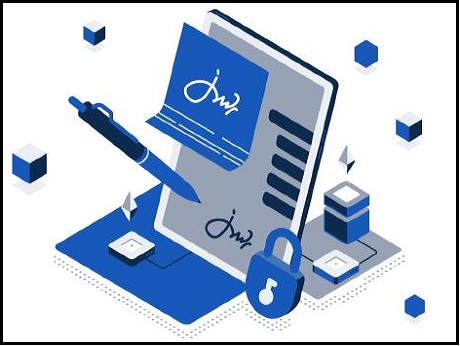
January 24 2021: 5 Simple Steps to use electronic signatures in your business
1. Identify your processes that would benefit from becoming completely digital
Take a minute to consider which documents or work processes are hindered by collecting signatures manually and waiting for the signed documents to be returned and processed. Using electronic signatures will save your business time and costs, increase transparency, make your document management process more efficient, while also enabling your business to operate in all environmental circumstance. It can furthermore drastically reduce the amount of time employees spend searching for documents by using the server to automatically select the document, insert the information and generate the required signature fields, making sure every contract is 100% compliant. Digitising processes can enable your workflow to automatically distribute the correct paperwork to the right employee by importing your active directory, saving you valuable time and resources.
2. Identify the requirements for eSignature solutions for your company
The requirements can be divided into Use-Case-related requirements, jurisdictional legal requirements, technical requirements and which departments within the company need to be consulted.
When identifying the various use-cases, common considerations are the physical location of the signatory: face-to-face (https://www.stepover.com/...) (POS) vs. remote signature, and the type of eSignature: handwritten vs. certificate-based. Depending on your business model and customer type the typical use-cases vary and therefore the best-suited eSignature solution differs.
Typical use-cases:
- Bank customer signs a contract out of the comfort of their own home, anywhere in the world, instantly, without waiting for mailing of the paperwork
- Signed confirmation of collection of goods at point of sale, automatically notifying the warehouse
- Work order signed by technician and inspected by supervisor, immediate processing of invoice
- Business partnership agreement with multiple signatories with mandatory and optional signatures, providing each individual with the original downloadable PDF
- HR periodically requires proof that all relevant employees completed mandatory training, employee confirmation collected via password-protected certificates
Identify which contracts can be signed electronically in your jurisdiction. Most countries allow and encourage the use of electronic signatures. Depending on your profession, you likely can sign anywhere from 80%-100% of your current contracts electronically.
The eSignature solution should be able to integrate into your existing IT-Infrastructure. Common considerations include: Is an offline solution at a counter or work station the preferred option, or a cloud-based signature solution that is accessible anywhere for employees, customers and business partners? Do you require high security signature pads at the point of sale/workstation, or are Tablet-PCs to sign directly on the screen, or mobile devices via App or HTML-Signer to be independent of the physical location, better suited? Do you require a simple setup on a few workstations, or our servers hosted in your location via SAAS, or even complete control by hosting on your premises?
Which departments within the company are key stake holders that need to be consulted? The list usually includes Legal & Data privacy, IT-Security, Specialist department for UX, Document Workflow Management and the respective department where implementation is planned.
3. Identify the degree of integration of your everyday processes into the eSignature solution
Automation of basic and repetitive, but time-consuming tasks offers you the highest return on investment. This can be in the form of signature field templates, pre-populating documents with customer data, and automatically sending out signature requests to contacts from your integrated active directory (no user-management required). Furthermore, one-time setup of digital certificates for employees to sign contracts, and even automatically processing and archiving documents with customer information contained in the signed document is possible. By establishing a generic signature server, which can serve various business applications integrated into the internal document management system, the entire process can be streamlined and reduce the dependency on additional third-party software.
4. Identify the acceleration factor that process optimisation creates for your company
To keep an edge over the competition, your company’s objective should be to minimise the time and effort that the customer faces between contract initialisation and completion, including involved costs to them such as mailing and labour. Enhancing your business position in a time-sensitive market and allowing customers to sign electronically from anywhere in the world with instant access to all documents does not only make you innovative, but serves your customers best.
5. Identify a process that you want to digitally replicate with a proof of concept
Each company is set up differently and has unique requirements. A proof of concept (POC) is an important step to iron out any arising issues and prepares you for a successful rollout across the various processes in your business.
Source: StepOver GmbH